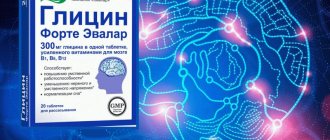Neurologist
SEMENOVA
Olga
neurologist, head of the office for diagnostics and treatment of cognitive disorders
Make an appointment
Epilepsy belongs to a group of chronic brain diseases. Its most characteristic manifestation is repeated attacks with simultaneous impairment of motor, sensory and mental functions. When seizures recur regularly, doctors talk about epileptic syndrome - systematic seizures. They are caused by tumors in the brain, adhesions or scar formations that irritate the nerve endings. The severity of attacks varies in duration and intensity, but is of the same type and manifests itself with similar external signs.
Difference between epileptic syndrome and epilepsy
These two concepts have a significant difference. Epileptic syndrome is often a consequence of a serious illness, while epilepsy is an independent pathology, the causes of which are still unknown. The epileptic syndrome may not be associated with epilepsy, and it is possible to completely relieve it if the provoking cause is eliminated. In addition, it does not affect a person’s mental and physical abilities, while epilepsy is accompanied by serious mental disorders and contributes to a decrease in intellectual activity.
Folk remedies
Folk remedies can be used as auxiliaries. As monotherapy, they have too little effect. Traditional medicine uses medicinal herbs that calm the nervous system, relieve stress, and normalize sleep. The following herbs are commonly used:
- valerian root;
- mistletoe;
- angelica root;
- mint.
Charlotte oil is widely used. It is made from a herb that has a hallucinogenic effect. In small doses, the oil has a positive effect on epileptics, reducing the frequency of attacks.
However, official medicine does not recommend experimenting with health in this way.
Causes of epilepsy in adults and children
The development of the disease can be triggered by:
- suffered traumatic brain injuries;
- genetic disorders in the structure of the brain;
- past brain diseases;
- consequences of infectious diseases;
- circulatory disorders in the head.
Among the factors contributing to the development of the disease are:
- stress, emotional overstrain;
- overwork;
- sudden changes in climatic conditions in the region of residence.
It is often not possible to determine the exact cause of epilepsy in adults. More than 50% of patients have an idiopathic form with an unknown mechanism of development. Often the patient is affected by several of these factors at once. In addition, for modern medicine, the human brain is not yet a fully studied area, and it is not possible to study individual pathological manifestations in detail.
If the cause of epilepsy has been stopped, experts call this form a secondary type of epilepsy. Among its main reasons:
- tumor processes in the brain;
- meningitis and encephalitis;
- hemorrhages in the structure of the brain;
- consequences of traumatic brain injuries;
- consequences of alcohol or chemical intoxication;
- influence of genetic factors;
- brain abscesses.
The risk group for the development of epilepsy includes patients with traumatic brain injuries, stroke or inflammatory diseases of the brain, relatives of epileptics, and people with a tendency to regularly drink alcohol.
Who is guilty?
Why does epilepsy still occur? Doctors believe that as many forms of this disease as there are causes that cause it. Sometimes this is a consequence of some kind of brain damage: a developmental defect, the consequences of a lack of oxygen during a difficult pregnancy and pathological childbirth, etc. If the reason is this, then epilepsy in a child often develops early, in the first or second year of life.
There is a separate group of diseases called idiopathic. They do not reveal any brain damage. It is believed that there is a genetic predisposition to such epilepsies, but it is not always clear to doctors what kind of predisposition it is.
People often talk about the hereditary nature of epilepsy.
“Yes, there are such forms,” confirms Elena Dmitrievna , “but they are extremely rare, rather they are the exception.” Another more common situation is when there is some genetic predisposition to developing seizures. For example, there is a predisposition to so-called benign childhood seizures. Children with this heredity are more likely to experience seizures at elevated temperatures, and they also have benign epileptic syndromes. They are easy to cure and go away without affecting the child’s intelligence.
Benign used to be called those epileptic syndromes that occurred with rare attacks and did not in any way affect the full development of the individual. Now this concept has narrowed somewhat: it is believed that truly benign epilepsies are those that can go away on their own, even if they are not treated. The attacks will continue for some time and then pass. But benign epileptic syndromes occur only in children.
Can a doctor, having diagnosed a child with epilepsy, simply send him home without prescribing any medications?
“Only in very rare cases,” explains Elena Dmitrievna. “And at the same time, we definitely require that there be prompt and good communication between the patient’s parents and the doctor. We must monitor the course of the disease.
Unfortunately, there are other syndromes that are at the opposite end of the spectrum. These are very severe types of epilepsy, they are called catastrophic. They also have another name - epileptic encephalopathies. They also occur only in children and are very difficult. But the main thing is that almost always such a disease causes a violation of neuropsychic and speech functions. And, if modern medicine can cope with attacks, then the regression of neuropsychic development that is observed in a small patient, unfortunately, can remain for life.
Signs of epilepsy
The first symptoms of epilepsy are observed at the age of 5-15 years. The possible occurrence of an attack is indicated by characteristic signs - worsening sleep and appetite, increased irritability, headache.
The seizure occurs suddenly, depriving the patient of consciousness and motor activity. He falls to the ground, tonic convulsions are observed, the body and limbs are stretched, the head is thrown back. Within 15-20 seconds from the onset of the attack, its character changes: signs of clonic convulsions are noted, the skin turns blue, the tongue sinks, foam is released from the mouth. The sense of orientation in space is completely lost, and hallucinations may occur. Within a few minutes without outside help, the patient's condition stabilizes, he regains consciousness, and the ability to move and think returns to him.
Often an attack of epilepsy causes drowsiness, a feeling of weakness and fatigue. An unsuccessful fall may result in injuries that can aggravate the patient's condition. It is characteristic that the patient himself cannot describe his condition and sensations during an epileptic attack.
A separate group includes attacks during which the patient experiences loss of consciousness with complete preservation of motor activity. Qualified diagnostics can accurately indicate the epileptic nature of this pathology.
Complications after epilepsy
Refusal to see a doctor for qualified help can cause a number of serious pathological changes in the patient’s body:
- status epilepticus is a sharp reduction in the intervals between attacks when the patient does not regain consciousness. In the absence of medical care, coma is likely to occur. The causes of the phenomenon are the consequences of traumatic brain injury, infectious diseases, negligence in completing the prescribed conservative course, a tendency to drink alcohol;
- a condition of aspiration pneumonia - caused by foreign objects or vomit entering the respiratory tract during an attack;
- neurogenic pulmonary edema caused by overload of the left atrium due to disturbances in the functioning of the nervous system and arterial hypertension;
- development and consolidation of mental disorders: selfishness, pickiness, aggressiveness, rancor, depressive states;
- sudden death during an attack.
What does an epileptologist treat?
An epileptologist treats epilepsy, which is understood as a set of neurological chronic diseases, combined into one group according to the method of occurrence (seizures are defined as sudden transient excessive excitation of neurons in the cerebral cortex).
An epileptologist treats primary generalized forms of the disease, in which attacks are characterized by bilateral symmetrical manifestations. These forms include absence seizures (minor seizures, in which there is a sudden short-term loss of consciousness) and tonic-clonic seizures.
Partial (focal) epileptic seizures are the result of damage to nerve cells in a specific area of the right or left hemisphere of the brain. Consciousness can be preserved (simple form), or can be disrupted or changed (complex form). It is possible to develop a secondary generalized form, in which the onset looks like a convulsive or non-convulsive focal seizure or absence seizure, after which motor convulsive activity spreads to all muscle groups (it is bilateral).
Diagnosis of epilepsy
When collecting a patient's medical history, the following questions are clarified:
- year and age of the patient at the time of the first attack;
- regularity of occurrence;
- the patient’s sensations before and immediately after the seizure ends;
- nature of muscle spasms.
It is possible to obtain answers to the above questions from the patient’s relatives who are witnesses to the attacks. Provided an accurate description of the disease, a neurologist can easily determine in which area of the brain the focus of epilepsy is located - a pathology that irritates nerve endings and causes seizures.
The only instrumental method for diagnosing epilepsy is an electroencephalogram. Electrodes located on the patient's head record brain signals in different parts of the brain, which are recorded in the computer in the form of characteristic graphs. Based on the resulting picture, signs of epileptiform activity can be easily seen. An informative diagnostic method is to read readings of brain activity during attacks. Comparing video recordings of the patient’s behavior and EEG data allows one to identify pathology in a certain area of the brain and take measures to eliminate it.
Magnetic resonance imaging may be useful if you are at risk of developing the disease. It is prescribed when the patient complains of headaches, unsteady gait and noticeable weakness in the limbs. The listed symptoms indicate organic brain damage, which can provoke the onset and regularity of attacks.
The development of epilepsy is not a reason for assigning disability status. The patient can continue to lead a normal lifestyle and work in a safe environment, regularly taking prescribed medications and monitoring for possible exacerbations. It is important that in the event of a sudden attack, first aid for epilepsy is provided to him by relatives or others.
Where to find the best epileptologist?
Which doctor treats epilepsy?
A doctor who treats epilepsy is called an epileptologist. This is a highly specialized neurologist, who, in addition to his main field, has studied in depth all the features of the development of the disease, types of seizures, the effects of drugs on the brain, genetic and physiological characteristics of the human nervous system. He understands seizures of various origins, antiepileptic drugs and their dosage.
When choosing a doctor, take into account his work experience and qualifications, participation in scientific research, and availability of international certification.
The top Spanish epileptologist is Professor Antonio Russi. In 1987, he founded the Institute of Epileptology at the Teknon Medical Center in Barcelona. Here the doctor sees children and adults even with the most severe forms of the disease, conducts comprehensive diagnostics and selects effective treatment. Professor Roussi is involved in research into new therapies and serves as President of the International Congress on Epilepsy. 95 out of 100 patients are successfully controlled by doctors.
Epileptologist from Israel - Professor Uri Kramer. He receives at the Medical Center. Suraski (Ichilov), where he heads the department of neurology. The doctor underwent training and internships in US clinics. Together with a team of neurologists and neurophysiologists, Professor Kramer developed the EpiLert bracelet , which warns of the onset of a seizure.
Treatment of epilepsy
The diagnosis of epilepsy in children or adults is not a final sentence for life. Provided timely seeking medical help and a favorable clinical picture, a complete cure is possible with the disappearance of attacks without the need to regularly take medications.
Treatment of epilepsy symptoms can be conservative or surgical. In the first case, the patient is prescribed a complex of drugs that suppress epileptiform activity and eliminate the cause of the development of the pathology. During surgical treatment, the focus of epilepsy - scars, tumors or foreign fragments after a traumatic brain injury - is removed from the brain structure without damaging healthy tissue. The recovery period after surgery depends on the area of brain damage, the severity of the disease and the general condition of the patient.
Features of the disease
Epilepsy is a condition characterized by repeated (more than two) epileptic seizures that are not provoked by any immediately identifiable causes. An epileptic seizure is a clinical manifestation of an abnormal and excessive discharge of brain neurons, causing sudden transient pathological phenomena (sensory, motor, mental, vegetative symptoms, changes in consciousness). It should be remembered that several epileptic seizures provoked or caused by any distinct causes (brain tumor, head injury) do not indicate the presence of epilepsy in the patient.
The disease epilepsy is often congenital in nature, as a result of which the first attacks occur in children aged between five and ten years or during puberty. Clinically, epileptic attacks are characterized by transient sensory, mental, motor and autonomic dysfunction.
Epilepsy in adults is divided into idiopathic (inherited, often even after tens of generations), symptomatic (there is a specific reason for the formation of foci of pathological impulses) and cryptogenic (it is impossible to establish the exact cause of the appearance of untimely impulse foci).
Preventive measures to prevent the development of epilepsy
Among the measures that prevent pathological brain activity are:
- protection against traumatic brain injury;
- timely treatment of infectious diseases;
- reducing high temperature during the acute stage of the disease, eliminating situations with a high risk of overheating or hypothermia;
- seeking medical help if you suspect an injury or tumor process in the brain;
- blood pressure control;
- moderately active lifestyle;
- giving up bad habits and drinking strong coffee.
In addition to the measures listed, during the recovery period of epilepsy treatment, it is recommended to strictly follow the doctor’s prescriptions and avoid physical and emotional overload.
Drug therapy for epilepsy. Indications and concerns
After a full examination, including MRI, VEEG and other additional research methods, a decision is made to prescribe anticonvulsant therapy.
Currently, there are about 20 anticonvulsants of various chemical groups. The choice of drug depends on the form of epilepsy, its cause, and the type of epileptic seizures.
It is very important to assess the tolerability of the drug, since most patients are forced to take therapy for many years (at least 2-3 years), and the development of side effects can significantly complicate the patient’s life even if the attacks have stopped due to treatment.
All anticonvulsants, whether recently introduced or used for many decades, have a risk of developing side effects. The nature of these effects is different. Some drugs can cause lethargy, drowsiness, dizziness (for example: phenobarbital, carbamazepine, etc.
The presence of descriptions of side effects in the instructions is not a reason to refuse to take the drug, since the safety of long-term use by patients has been confirmed for all anticonvulsants.
However, the introduction of a new drug into the treatment regimen should be carried out under the supervision of a physician. If poor tolerance is suspected, the patient should immediately inform the doctor about the deterioration in health.
The effectiveness of drugs of the new and old generations is approximately the same and is assessed individually.
There are patients in whom both new generation drugs and “old” anticonvulsants will be effective. Other patients are insensitive to “old” drugs but tolerate and respond well to new drugs. Some patients with epilepsy cannot tolerate the latest generation of drugs, but stable remission can be achieved by taking a drug invented in the century before last - phenobarbital.
Our clinic has the ability to use all drugs registered in Europe. The prescription of orphan (unregistered in Russia) drugs is carried out according to the rules established by the Russian Ministry of Health for the treatment of special diseases.
In total, in 75-80% of patients, the use of drug treatment allows achieving complete remission; in some cases (with good examination results), after 2-3 years it is possible to consider discontinuing treatment.
Unfortunately, there is still a group of patients with epilepsy (about 20-25%), whose brain does not respond to any anticonvulsant medications. That is, taking anticonvulsants, even in large doses and the most modern combinations, does not allow one to get rid of seizures. This type of epilepsy is called true-resistant epilepsy.
True resistance is the lack of effect from the use of 3 first-line drugs in maximum doses for 2 years in patients with a correctly diagnosed epilepsy.
Resistant forms of epilepsy occur in all types of epilepsy, but the most favorable prognosis is for idiopathic forms, in which remission reaches 90-100% of patients.
There are obviously unfavorable forms, the remission rate of which is less than 30-50%. Examples of such forms are cryptogenic childhood epilepsies: West syndrome, Lennox-Gastaut syndrome, Duse syndrome, Tassinari syndrome, severe myoclonic epilepsy of newborns, etc.
In adult patients, epilepsy, as a rule, is acquired, and the prognosis largely depends on the cause that caused it. For example, post-stroke epilepsy and epilepsy that occurs in a patient who abused alcohol can be treated quite successfully. Epilepsy with temporal lobe sclerosis and focal brain dysgenesis is difficult to treat.
The mechanisms of resistance are currently not fully understood.
It is known that one of the factors of resistance may be the late start of treatment and a large number of attacks before starting to take the drugs. The cause of drug resistance may be a genetic predisposition, discovered resistance genes (CDKL5 gene, ABCB1 C3435T).
Treatment of drug-resistant, drug-insensitive patients is the most difficult, but partly solvable problem of epileptology.
Epilepsy affects all aspects of a patient's life, and understanding these problems is important from a medical and social point of view. The most important goal of epilepsy treatment is to stop seizures while minimizing the side effects of antiepileptic therapy. In recent years, there have been positive changes in solving the problem of epilepsy.
More advanced imaging methods have emerged that have made it possible to diagnose the organic nature of the disease. The main goal of conservative treatment of patients is to prevent relapses of attacks. Therefore, pronounced symptoms of epilepsy may be an indication for conservative therapy. Before starting treatment, it is necessary to confirm the diagnosis. And for this, the patient needs to undergo a comprehensive examination. Diagnostics includes the following studies:
- blood analysis,
- radiography of the skull,
- fundus examination,
- Doppler ultrasound of the cerebral arteries.
Neuroimaging using computed x-ray or magnetic resonance imaging of the brain is mandatory. Treatment may not work if the patient has ignored the symptoms of epilepsy for a long time or has not followed the doctor’s recommendations. If all conservative methods are ineffective, and the form of the disease meets certain indications, surgical treatment is used.
FAQ
Is epilepsy inherited?
The hereditary factor is relevant for patients with epilepsy in more than 50% of diagnosed cases. Genetic disorders in the structure of the brain can be passed on from one or both parents. The exact cause of the disease can be determined based on diagnostic data.
Is epilepsy treated in children?
Cure from epilepsy is possible at any age, provided that you seek help in a timely manner and cooperate with a qualified specialist - a neurologist. We can talk about complete or significant partial relief of symptoms based on the diagnostic data. The main requirement for parents is not to refuse the proposed treatment and to complete the prescribed course, regardless of its duration.
Is there any disability for epilepsy?
A diagnosis of “epilepsy” does not make the patient a person with disabilities, so this status is not assigned to him. If you follow your doctor’s recommendations, you can lead a normal lifestyle and work successfully, but give up bad habits that aggravate the course of the disease. If warning signs of an attack appear, you should notify relatives or others so that they can provide timely assistance.
It is possible to transfer a patient with epilepsy to easier work within the same enterprise. While the attack is approaching, it is not recommended to drive a vehicle, operate machines, swim or engage in extreme sports.
Where is epilepsy best treated - at home or abroad?
During Bookimed’s work, more than 3,500 patients turned to us for help in choosing a clinic for the treatment of epilepsy abroad. Based on their experience, we have established that it is worth choosing a foreign clinic in the following cases:
- more than 3 anticonvulsant drug regimens were ineffective;
- your child has a developmental delay, but doctors cannot determine the exact cause;
- the attacks do not stop, although all available methods have been tried.
For examination, doctors in Spain, Turkey, Israel and Germany use the most accurate modern technologies. The clinics that Bookimed works with in these countries update their medical equipment every 2-3 years. Thanks to diagnostics using such installations, the doctor selects effective treatment even in difficult cases.
According to the Teknon Medical Center in Barcelona (Spain), where Professor Antonio Russi receives treatment, 30 out of 100 patients who were not helped by therapy at home came to the clinic with an incorrect diagnosis.
To find the optimal medical solution for our patients with epilepsy, Bookimed cooperates with 100 clinics around the world. They use drug therapy, surgery and neurostimulation. Such techniques require highly qualified neurologists and neurosurgeons, and special equipment available only in specialized epileptology centers. Here the patient will receive the most effective treatment for epilepsy, and not the only one possible in a particular medical institution.
Get treatment advice











